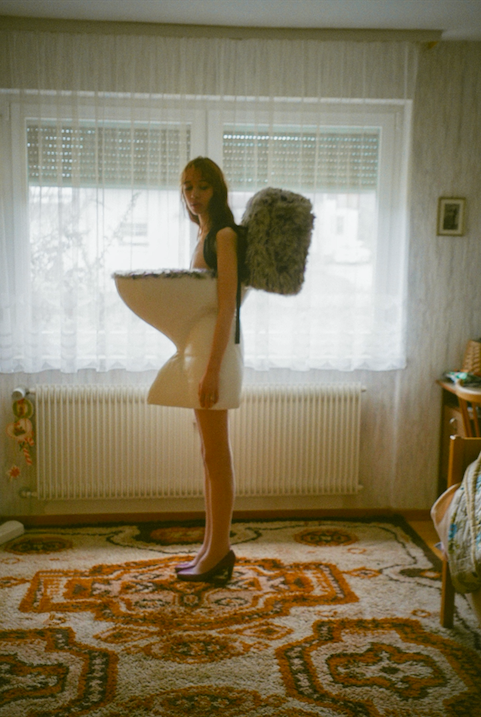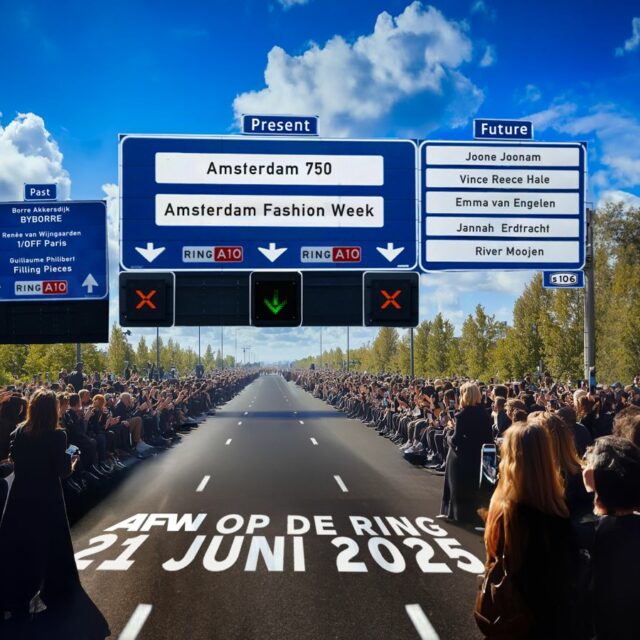After receiving an abundant amount of open call applications, the Lichting jury announced their selection of 10 final candidates that will be competing against each other for the Lichting 2023 title. Before their debut to the public during Amsterdam Fashion Week Edition 2023, AFW sat down with each participant to talk about their collection and their plans for the upcoming Lichting show. This week we would like to introduce you to Joseph William Raidt.
Can you tell me something about yourself and your trajectory as a fashion student?
From a very young age, I realised that explaining myself and talking about my thoughts are not my strong suit. Making clothes is a way to express myself that I find to be easier for me. I actually started to study fashion because it was seen as cool but I had no clue that it would provide me with a new way to communicate my thoughts, annoyances, my life story. I only realised later on during my studies that fashion is a form of communication, one that doesn’t need words per se. It’s also a way for me to question my surroundings and my inner world.
How did the concept of your graduation collection come to being?
Nine years ago, my “Oma Gertrude” got Alzheimer. I slowly became aware of how bad our communication had become over those years and that really frustrated me. I was almost afraid of visiting her because I was worried that I would get annoyed if she wouldn’t understand me. Because of this, I decided to start a workshop with my grandmother with the intent to communicate without words. My grandma was a seamstress when she was younger and I thought that was a common denominator we could work with. In this workshop, I would bring some clothing items I knew she didn’t like or approve of, then I would let her do whatever she wanted to do to these garments. There were some really interesting findings, how she constructed garments or altered them. She truly inspired my way of thinking and I used that to develop this collection. She for instance hated motorcyclists so I brought her a motorcycle jacket. Somehow, she forgot her disapproval towards a lot of things and in that sense, she became more accepting of things. She used to criticise me wearing skirts but she even forgot the stereotypical idea that skirts are for women, and that led to my first interesting aspect of my collection: a physical collage of my grandmother. When the project started, she was still living by herself, and often she was home alone. I would wonder what she would be doing at home. In my head everything she did must have been awkward and difficult, so I made collages imagining how she would dress herself now. I played with the aspect of surrealism and imagined her dressing herself with inanimate objects in her house because she forgot what function they have. I started thinking: what if she thinks a toilet is something to wear, or a washing machine. That was the starting point of how I interpreted her way of thinking into clothing pieces.

What important themes do you address with your collection?
Outfit one to ten was the build-up of my grandmother’s Alzheimer and shows the process of her illness becoming worse and worse. During my project she had to be placed in an old people’s home so I asked the people working there to bring me an outfit my grandmother would wear all the time there. I just took that garment and put that on a model as my last collection piece to showcase how her freedom somehow was taken away because she had to abide to the schedule of the home. This was my interpretation of her not being capable of making her own decisions.
Which piece from the collection is your favourite? Why?
I would say that last piece is my strongest outfit because it has the strongest meaning. I didn’t change anything to it and just took it how she would wear it. Of course, it’s hard to see that as a proper design because it doesn’t show my skills. It however does show my story in the best way possible which is important to me because making this collection was also the way I dealt with my grandma’s Alzheimer. I really wanted to show with this collection that that having a relative or friend suffering with Alzheimer is not necessarily so bad, it’s more that we need to explore new ways to take care of them. I would love to share the ways in which I deal with it, so hopefully others can learn something of it as well.

How would you describe your signature as a designer? How does this reflect in your collection?
I have a very sculptural way of designing; I make every outfit over the top but simultaneously ensure that my designs hold a modern elegant touch. My starting point is not a clothing piece but somehow it eventually transforms into one. That way of working triggers me to think about garments differently. It’s a tedious and sometimes very hard process but also so rewarding. For years, I have been sculpting garments and I thoroughly enjoy that way of designing.
What would be the ideal way to present your collection to the public in September? Can you already say something about what you currently have in mind?
I want to focus on the surrealistic approach of the garments to trigger people to think for themselves and see it as something fun, so my selection will be based on that. In terms of showcasing, I’m leaning towards a more traditional catwalk because I think the garments don’t need anything extra to be enjoyed at its fullest. I want people to, very straightforwardly, see my collection and let their mind wander like that. Even with styling I’m keeping it quite minimal, as I don’t want to make the concept of my collection too literal or obvious.






